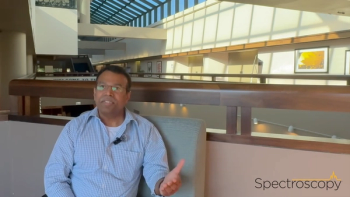
Humans and Machines Unite Using Symbiotic AI to Transform Polymer Chemistry and Spectroscopy
Key Takeaways
- Polymer chemistry has transitioned from serendipitous discoveries to AI-driven autonomous systems, enhancing the pace of discovery.
- Self-driving laboratories (SDLs) utilize high-throughput experimentation, robotics, and machine learning to explore chemical space efficiently.
A new perspective from researchers at the Karlsruhe Institute of Technology explores the evolving relationship between human expertise and artificial intelligence in polymer chemistry.
From Alchemy to Automation: A Century of Polymer Progress
Polymer chemistry has come a long way since its early “alchemy” days. In a new article published in Macromolecular Rapid Communications (1), researchers Bahar Dadfar, Berna Alemdag, and Gözde Kabay from the Karlsruhe Institute of Technology’s Institute of Functional Interfaces (IFG) and Department for Bioengineering and Biosystems trace the evolution of the field from intuitive trial-and-error to autonomous, AI-driven discovery.
The study argues that the future of materials discovery will rely on symbiotic collaboration—merging human intuition and ethics with AI’s speed and scalability—to unlock new classes of polymers with unprecedented properties.
The authors describe three key eras: the alchemist’s era, characterized by serendipitous discoveries like polytetrafluoroethylene (PTFE, or Teflon) in 1938; the scientist’s era, defined by systematic design using statistical design of experiments (DoE) and combinatorial chemistry; and the robot’s era, marked by self-driving laboratories (SDLs) that integrate automation and artificial intelligence into closed-loop experimental workflows.
The Rise of Self-Driving Laboratories
The latest chapter in this story is the emergence of SDLs—automated platforms that design, execute, and analyze polymer synthesis with minimal human involvement. These systems combine high-throughput experimentation (HTE), advanced robotics, and machine learning (ML) algorithms to rapidly explore chemical space. As the authors note, SDLs enable the design-build-test-learn cycle to operate autonomously, greatly accelerating the pace of polymer discovery (1).
HTE platforms, pioneered in the 1990s, laid the groundwork by enabling hundreds of polymer reactions to be conducted and analyzed in parallel. Robotics, miniaturized synthesis, and real-time analytical tools—including spectroscopic techniques for monitoring reaction kinetics and structure–property relationships (SPRs)—allowed for a more comprehensive mapping of chemical behavior than was possible with manual experimentation alone.
Spectroscopic analysis remains central to these workflows. Automated inline techniques, such as infrared (IR), near-infrared (NIR), and Raman spectroscopy, provide rapid, non-destructive characterization of polymer composition, crystallinity, and molecular structure during synthesis. This real-time feedback is essential for the adaptive control of SDLs and the refinement of machine learning models that predict polymer properties based on spectral features.
AI Alone Isn’t Enough
Despite their power, SDLs face significant challenges. AI algorithms can introduce biases, struggle with sparse datasets, and often operate as “black boxes” that obscure the reasoning behind their predictions (1). These limitations highlight a key insight from the authors: complete algorithmic autonomy is insufficient for scientific progress.
Human researchers bring critical elements to the table, including intuition, ethical judgment, and the ability to recognize anomalies or propose new hypotheses. As Dadfar and colleagues argue, the future of polymer science will depend on symbiotic autonomy—a hybrid model in which human creativity and domain expertise complement AI’s computational strength (1–2).
Toward Symbiotic Intelligence
The authors propose several strategies to strengthen human–AI collaboration in SDLs. Digital twins—virtual replicas of experimental systems—can simulate “what-if” scenarios, generate synthetic training data, and test hypotheses before physical experiments are conducted. Transfer learning and multi-task learning approaches can help overcome data limitations by leveraging knowledge across different chemical tasks (1–2).
Explainable AI (XAI) tools are also crucial (3). By making model decisions interpretable, they build trust among researchers and ensure that machine-generated hypotheses can be critically evaluated. User-centric interfaces and large language model (LLM)-powered assistants, such as GPT-4-based tools, are poised to further streamline communication between human scientists and autonomous systems.
Spectroscopy again plays a pivotal role here. As machine learning (ML) models learn to correlate spectral signatures with polymer properties, they become more adept at predicting outcomes and identifying optimal synthesis pathways. Human oversight ensures that these predictions align with physical and chemical principles, such as thermodynamics, reactivity, and solubility.
The Future: Faster, Smarter, More Ethical
Ultimately, the authors envision a future where humans act as orchestrators of intelligent systems—setting goals, imposing ethical constraints, and interpreting AI-driven discoveries. Hybrid platforms like Polybot and NIST’s Autonomous Formulation Laboratory already exemplify this vision, using spectroscopic feedback loops and active learning strategies to accelerate discovery while maintaining scientific rigor (1–3).
“The true breakthrough,” the authors write, “lies not in replacing humans with AI but in orchestrating partnerships where human creativity and computational power amplify each other’s capabilities” (1). This collaboration promises not only faster polymer discovery but also deeper mechanistic understanding—revealing new structure–property relationships and uncovering materials that neither humans nor machines could have discovered alone.”
References
(1) Dadfar, B.; Alemdag, B.; Kabay, G. The Alchemist, the Scientist, and the Robot: Exploring the Potential of Human-AI Symbiosis in Self-Driving Polymer Laboratories. Macromol. Rapid Commun. 2025, e00380. DOI:
(2) Feng, F., Huo, D., Zhang, Z., Lou, Y., Wang, S., Gu, Z., Liu, D.S., Duan, X., Wang, D., Liu, X. and Qi, J., 2025. Symbiotic evolution of photonics and artificial intelligence: a comprehensive review. Advanced Photonics, 7(2), pp.024001-024001. DOI:
(3) Workman, J., Jr. How Is Explainable AI Transforming Spectroscopy? Spectroscopy 2025, Online, October 8.
Newsletter
Get essential updates on the latest spectroscopy technologies, regulatory standards, and best practices—subscribe today to Spectroscopy.





